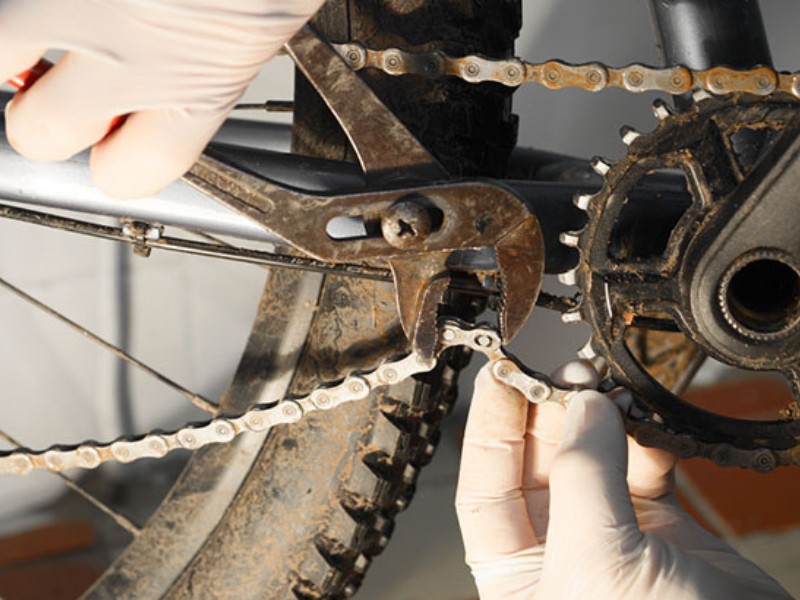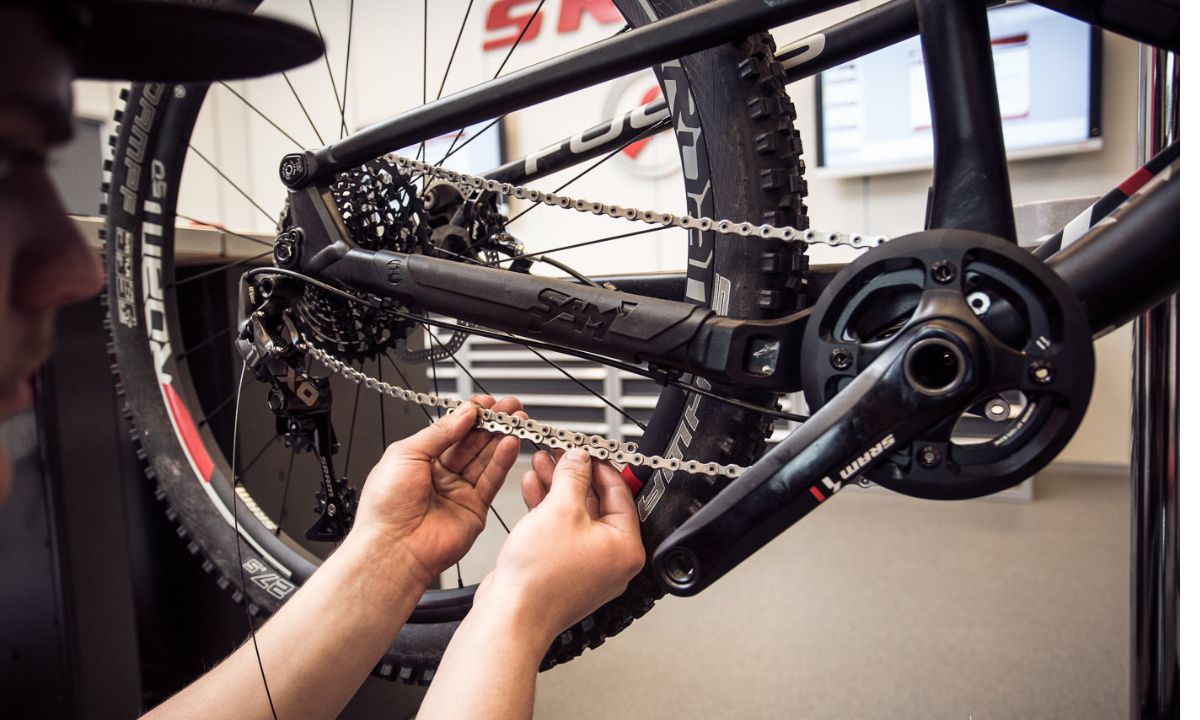How To Tighten The Chain On A Mountain Bike?
Maintaining the proper tension of your mountain bike’s chain is crucial for a smooth and efficient ride. An overly loose chain can cause damage to your bike’s drivetrain, while an excessively tight chain can cause unnecessary stress and wear on the chain and other components. Therefore, knowing how to tighten the chain on your mountain bike is essential.
In this blog post, we’ll guide you through the steps to tighten the chain and provide some tips for regular maintenance to ensure optimal chain performance. So, let’s get started!
Contents
- 1 Introduction to Chain Tightening on a Mountain Bike
- 2 Steps to Tighten the Chain on a Mountain Bike
- 2.1 Step 1: Check the Chain Slack
- 2.2 Step 2: Loosen the Rear Wheel
- 2.3 Step 3: Align the Rear Wheel
- 2.4 Step 4: Tighten the Rear Wheel
- 2.5 Step 5: Check Chain Tension
- 2.6 Checking Chain Tension After Tightening
- 2.7 Common Mistakes to Avoid During Chain Tightening
- 2.8 Regular Maintenance for Optimal Chain Performance
- 3 Conclusion
- 4 FAQS
- 4.1 1. What tools are needed to tighten the chain on a mountain bike?
- 4.2 2. How do I check the chain slack on my mountain bike?
- 4.3 3. How often should I clean and lubricate my bike chain?
- 4.4 4. Can over-tightening the chain cause damage to the bike?
- 4.5 5. What is a chain tool used for in bike maintenance?
- 4.6 6. Why is proper chain tension important in maintaining a mountain bike?
Introduction to Chain Tightening on a Mountain Bike

Maintaining a well-tensioned chain is crucial for a smooth and efficient ride on your mountain bike. A loose chain can cause damage to your bike’s drivetrain and result in a less effective pedal stroke.
On the other hand, an overly tight chain can cause unnecessary stress and wear on the chain and other components. Therefore, properly tightening the chain on your mountain bike is essential.
Importance of Proper Chain Tension
A correctly tensioned chain ensures that the chain stays on the gears and pedals smoothly without slipping. An overly loose chain can cause the chain to skip gears or even fall off, while an excessively tight chain can cause excess wear and tear on the chain and other drivetrain components, leading to premature failure.
Tools Required for Chain Tightening
To tighten your chain, you’ll need a few tools, such as:
- A chain tool is specialized for removing and replacing chain links.
- Hex keys are 4mm, 5mm, and 6mm long and are required for chainring bolts and rear derailleur adjustments.
- The wrench is for adjusting the rear wheel axle nuts or quick release.
- Tape a measure or ruler to measure the amount of slack in the chain.
Steps to Tighten the Chain on a Mountain Bike

Before beginning the process, ensure your bike is securely positioned on a bike stand or inverted in a bike rack. Follow these steps to tighten your chain:
Step 1: Check the Chain Slack
Check the chain slack by measuring the distance between the center of the chainstay and the center of the chain when the rear wheel is in its farthest position away from the bottom bracket. When pulled down, the chain should have around 1-2 inches of slack.
Step 2: Loosen the Rear Wheel
Use a wrench to loosen the axle nuts or quick-release lever on the rear wheel. This allows you to move the wheel forward or backward.
Step 3: Align the Rear Wheel
Move the wheel forward or backward to adjust the chain slack as needed. Ensure that the wheel is straight and properly aligned with the bike frame.
Step 4: Tighten the Rear Wheel
Once you’ve adjusted the chain slack, tighten the axle nuts or quick-release lever to secure the wheel in place.
Step 5: Check Chain Tension
Recheck the chain tension after tightening the axle nuts or quick-release lever. When pulled down, there should be around 1-2 inches of slack in the chain.
Checking Chain Tension After Tightening
After tightening the chain, it’s essential to recheck the chain tension to ensure it’s within the proper range. The chain should move smoothly through the gears without slipping or binding. It should also have a slight amount of play when pulled down.
Common Mistakes to Avoid During Chain Tightening

Avoid these common mistakes when tightening your chain:
- Over-tightening the chain can cause premature wear and tear on the chain and drivetrain components.
- Under-tightening the chain can cause the chain to skip gears or even fall off while riding.
- A misaligned wheel can cause the chain to bind or wear unevenly.
Regular Maintenance for Optimal Chain Performance
Regular maintenance is essential for optimal chain performance. It’s recommended to clean and lubricate your chain after every ride or at least once a week. This will help to prevent rust, corrosion, and excess wear and tear on your chain and drivetrain components.
Read Also: How to Adjust Shimano Gears on a Mountain Bike
Conclusion
In conclusion, tightening the chain on your mountain bike is an essential maintenance task that every rider should know. Proper chain tension ensures optimal performance and helps to prevent damage to your bike’s drivetrain. Follow these steps and maintain regular maintenance for a smooth and efficient ride.
FAQS
1. What tools are needed to tighten the chain on a mountain bike?
Answer: You’ll need a chain tool, hex keys, a wrench, and a tape measure or ruler.
2. How do I check the chain slack on my mountain bike?
Answer: Measure the distance between the center of the chainstay and the center of the chain when the rear wheel is in its farthest position away from the bottom bracket. When pulled down, the chain should have around 1-2 inches of slack.
3. How often should I clean and lubricate my bike chain?
Answer: We recommend cleaning and lubricating your chain after every ride or at least once a week. This will help to prevent rust, corrosion, and excess wear and tear on your chain and drivetrain components.
4. Can over-tightening the chain cause damage to the bike?
Answer: Over-tightening the chain can cause premature wear and tear on the chain and drivetrain components.
5. What is a chain tool used for in bike maintenance?
Answer: A chain tool removes and installs chain pins when repairing or replacing a chain. It’s also used to adjust the chain length and tension.
6. Why is proper chain tension important in maintaining a mountain bike?
Answer: Proper chain tension ensures optimal performance and helps prevent damage to the bike’s drivetrain. An overly loose or tight chain can cause unnecessary stress and wear on the chain and other components.


